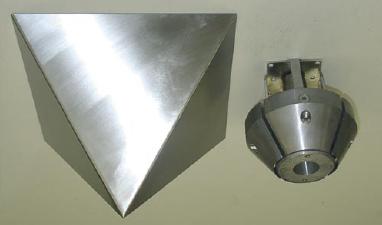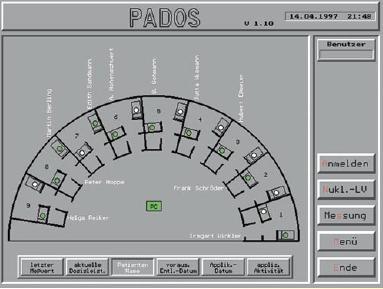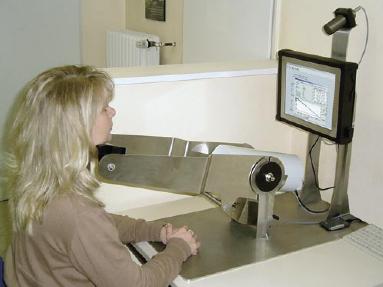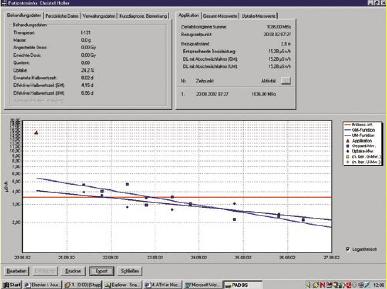



Because of radiation protection regulations it is only allowed to perform the I-131 therapy under stationary conditions. The release of a patient from stationary treatment after application of open radioactive materials and/or sources in the body is only allowed, if the dose rate on the day of release on 2 m distance doesn’t exceed 3.5 µSv/h. This corresponds to a rest activity of approx. 250 MBq.
The PADOS system makes it possible to measure and register the current activity and/or the dose rate of the resting patient periodically. For measurement, a detector collimated for the area is mounted over the bed. A NaI-scintillation probe is used as detector. Via a serial interface (RS 485) the detectors are connected to the central PC-system. The cables are mounted from one detector to the next... up to the PC-system.
The measurement data are analysed and stored by the PC-system. Only constant measuring intervals are used for moni- toring. Based on the periodically registered data, the system software calculates the expected moment of falling below the limit value as date for the patient’s release. In this way, an optimized bed planning for the therapy ward is possible.
The measuring data of the detectors are transmitted to the central PC-system via the data network and are summarised to a total overview with graphic display of the ward floor plan. Several radiological data can be displayed and printed for each patient. Medical data can e.g. be summarised to a release report, combined with the radiological data.


If the installation of a measuring network including cable installation requires too much work or is impossible due to the building’s construction, the PADOS II system makes a directly comparable monitoring possible.
The PADOS II system has been developed for manual, selfresponsive measurement by the patient. For this purpose, the measuring system is installed at an appropriate, central location on the therapy ward. After identification by means of a bed-based transponder system, the patient measure themselves independently 1 - 3 times per day here. The mechanical construction with a motor-adjustable chin holder guarantees a stable measuring geometry and a reproducible measurement. The exact measuring position and the observance of the required measuring time is checked by a light barrier integrated in the chin holder.
The measuring system consists of a shielded counter tube for measurement of the thyroid activity and a second, energy-compensated counter tube for measurement of the total body dose based on 1 m distance. The PC-based measuring system works with a modified PADOS software.
The modified PADOS II system is a low-price variant of the online PADOS system, since even in case of a larger amount of beds still only 1 detector system is required.